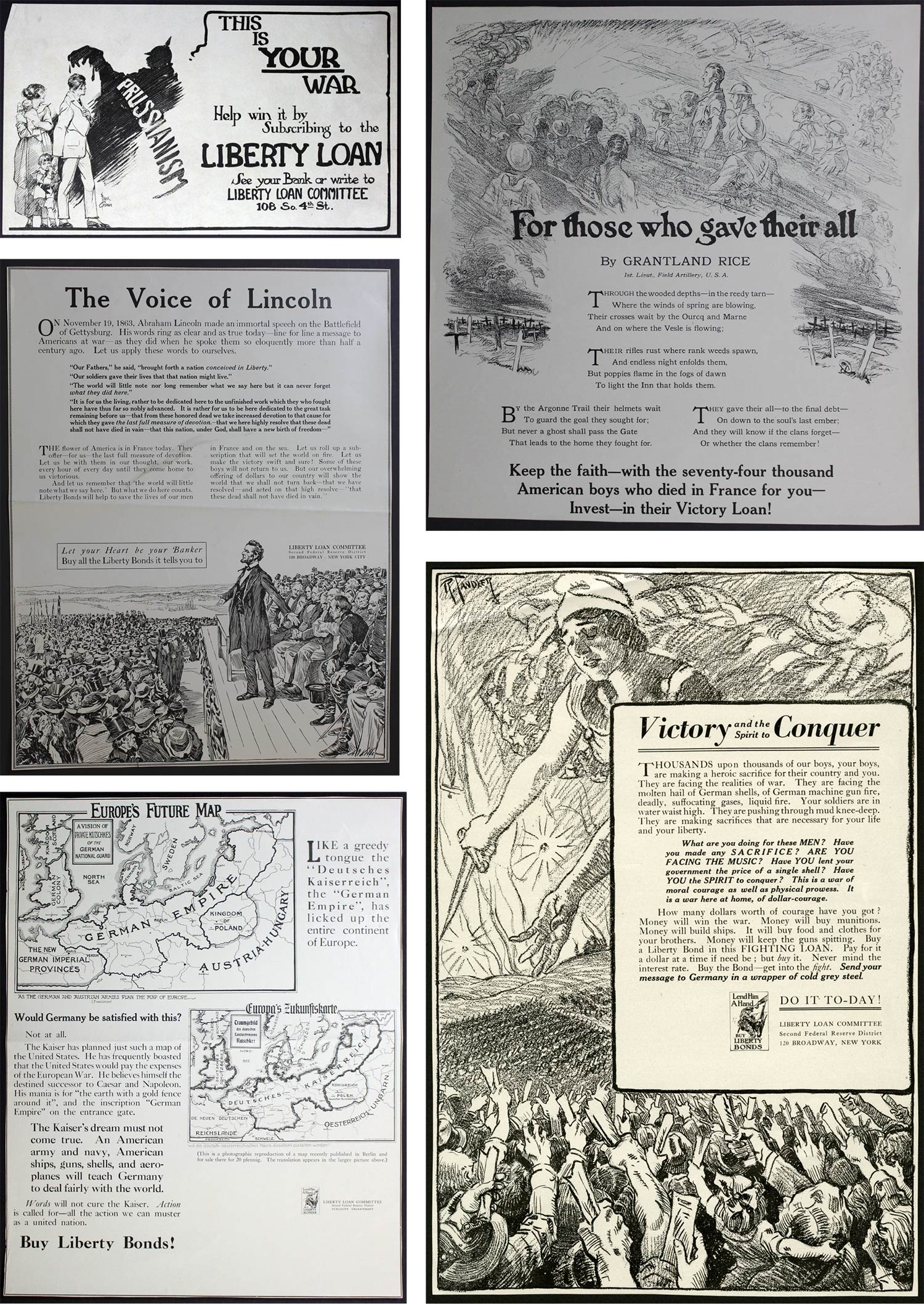Selling World War I: "Buy Liberty Bonds!" 1917-1919
A Spotlight on a Primary Source by US Department of the Treasury (9990)
When the United States declared war on Germany in April 1917, it needed funds to support the war effort. The Civil War had demonstrated that simply printing more currency would lead to inflation and economic trouble. During World War I, the Secretary of the Treasury and head of the Federal Reserve, William G. McAdoo, did not want to risk devaluing the new US paper currency, which had only been in existence since 1914. Therefore, McAdoo decided to gather one-third of the money needed through taxes and the rest through fundraising.
On April 28, 1917, only twenty-two days after the US entered the war, McAdoo announced the Liberty Loan Plan to sell Liberty Bonds to fund the war. The plan had three parts:
-
Educate people on the causes and objectives of the war
-
Appeal to Americans’ patriotism, encouraging everyone from children to millionaires to reduce personal spending in order to buy bonds
-
Use volunteer labor instead of government workers to sell the bonds
McAdoo explained that “we must be willing to give up something of personal convenience, something of personal comfort, something of our treasure—all, if necessary, and our lives in the bargain, to support our Noble sons who go out to die for us.”[1]
The lowest denomination for the Liberty Bond was $50, which was equivalent to two weeks’ salary for factory workers. To make the bonds more affordable for the general public, a savings system was implemented that allowed people to buy Thrift Stamps for 25 cents each and paste them onto a collection card. Once the card had sixteen stamps, it was exchanged for a $5 War Savings Stamp, which was affixed to a War Savings Certificate. Ten certificates could be traded in for a $50 Liberty Bond.
There were four Liberty Loan drives and a Victory Loan drive, which occurred after the armistice. By the end of the war, 20 million people had purchased Liberty Bonds. Seventeen billion dollars was raised through the sale of Liberty Bonds and $8.8 billion was raised through taxation.
Propaganda posters advertising the sale of Liberty Bonds were crucial to the fundraising efforts. They educated Americans about the causes and potential costs of the war and appealed to their patriotism. The posters below are a sampling of the different types of propaganda the government used to urge Americans to support the war effort. They are a result of McAdoo’s belief that “any great war must necessarily be a popular movement. It is a kind of crusade; and like all crusades, it sweeps along on a powerful stream of romanticism.”[2]
[1] Quoted in Richard Sutch, “Liberty Bonds, April 1917–September 1918,” Federal Reserve History, https://www.federalreservehistory.org/essays/liberty_bonds
[2] William G. McAdoo, Crowded Years (Boston: Houghton Mifflin, 1931), p. 374.

